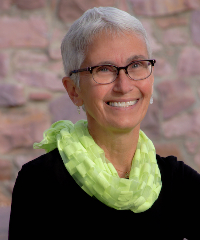Science Cafe Posts - Mission Mosquito
GLOBE Breadcrumb
- Home >
- Mission Mosquito >
- Science Cafe Posts
Banner and NavBar
Science Cafe Posts
Please complete your formal training to unlock the ability to create GLOBE Blogs.
See Training > User Roadmaps in the site navigation to learn more.Blogs

In this article, meet Prof. Glenda Ivette Lozada Negrón, a science teacher whose elementary classroom is actively engaged in reducing the risk of mosquito borne disease through mosquito surveillance and mitigation, as part of an ongoing service learning project in Puerto Rico . Tell us about your project? The project began as part of a curriculum with the Science and Research Trust of Puerto...

Guest Scientist blog by Dr. Joseph Kerski, Esri Esri and the GLOBE program have been working together on initiatives and educator training for decades. GLOBE was one of the first major education-focused citizen science programs, and it offers a wealth of data on soil chemistry, water quality, weather, and much more, as well as rigorously tested methods to have your...

Guest Scientist Blog by Kayla M. Thomas, McNair Scholar, Southern Nazarene University Oklahoma has experienced three major outbreaks of West Nile Virus (WNV) since its local introduction in 2002. State and local health agencies provide surveillance of mosquito-borne diseases although reduced resources and personnel limits its scope. With the addition of citizen scientists from the greater...

Guest Scientist Blog by Kenan Arica, NASA JPL Summer Intern Mosquitoes are vectors for diseases such as malaria, dengue, Zika, Rift Valley fever, West Nile virus, chikungunya and other diseases. Unfortunately, climate change is expected to make the spread of mosquito-borne diseases worse. This summer, I did some exploratory research to see if we could combine the power of GLOBE citizen...

Guest Scientist Blog by Jacqueline Castellanos, NASA JPL Summer Intern My summer internship at NASA Jet Propulsion Laboratory exposed me to all parts of the scientific process. I went on a hike in search of mosquitoes, collected data, and I had the opportunity to teach teachers how to use the GLOBE Observer Mosquito Habitat Mapper. In my analysis, I learned how to work with data of varying...

Left: SEES Mosquito Mapper intern Maia W. in the field, sampling a mosquito larvae habitat on a construction site in her hometown. Right: GLOBE Observer Land Cover observations collected alongside mosquito habitat identifications provide important data for analysis. Photo credit: Author. As part of our field research, SEES interns identify local potential...

SEES Mosquito Mapper intern Lindsay W. in the field, sampling a mosquito larvae habitat site in her study area. Photo credit: Author. California has recently emerged from a multi-year drought, but I live at the edge of a town in the chaparral where water is typically scarce. I often travel miles by car to find potential mosquito habitats, only to find no larvae in those water sources. I...

Left: example larva of the genus Toxorhynchites recovered from one of the author's research traps. Right: Larval specimen of prey, Culex quinquefasciatus, for comparison. Toxorhynchites are predator larvae and easily recognized by their unique morphology and larger size. Photo credit: Author. Toxorhynchites is part of the mosquito family (Culicidae),...

SEES Mosquito Mapper intern Parker L. in his lab, identifying a specimen recovered from one of his mosquito research traps. Photo credit: Author. I am fascinated at how effectively Aedes albopictus has expanded beyond its historical geographical origins in Asia, sticking its proboscis into Texas along with every continent across the globe except Antarctica. This invasive mosquito,...

SEES Mosquito Mapper intern Thien-Nha T. in the field, documenting potential larvae habitat sites. Photo credit: Author. Before this project, I never ever imagined I would be interested in studying any type of bugs, much less mosquitoes -- my itch-causing nemesis. However, the more I realized how interconnected these bugs are with the rest of the world and even my own life, the more I saw...

SEES Mosquito Mapper intern in the field, setting mosquito traps. Photo credit: Clara U. Something that has fascinated me in the research I have done so far is the vast impact that human activity has on the distribution of mosquito communities. Globalization and human travel are thought to be responsible for introducing many mosquito-borne diseases to unlikely areas, for example, spreading...

Dr. Caio França speaking at the Science Museum Oklahoma. Oklahoma is an ecologically diverse state in the Southern Plains region of the U.S. It is part of the central flyway for migratory birds, which makes it a sentinel location for West Nile Virus (WNV) surveillance. Why birds? Birds play a role in the WNV transmission cycle. Mosquitoes become infected with WNV when they bite an infected...

You may have heard the news- there is an exciting challenge this summer for GLOBE Observer users! The challenge follows in the spirit of early cartographers, Meriwether Lewis and William Clark, and you can win one of two ways. First, use GLOBE Observer to map as much land cover as possible in any GLOBE country by September 2. The top data collectors...

Our team has received several questions about what to do when mosquitoes are found in a natural habitat, such as an estuary or a wetland. When you use the Mosquito Habitat Mapper and your mosquito observations are finally logged, you are then prompted to do Step 4, “Eliminating Mosquito Breeding Habitat. By dumping or treating water you can significantly decrease the spread of...

With the beginning of the mosquito season comes the need for protecting individuals and communities from mosquitoes. When you use the GLOBE Observer Mosquito Habitat Mapper tool, you are not only providing useful surveillance information about when and where mosquitoes are found: you also are providing an important public service known as “source reduction.” Take a look around your home,...

Have app, will travel! I am reporting from the field, the campus of the University of Hawaii, Manoa (UHM). I am meeting with citizen scientists here who are collecting data using the GLOBE Observer app. I had the good fortune to meet Dr. Floyd Reed, a professor in the Department of Biology. His lab is involved in modifying strains of Culex mosquitoes so that they are unable to transmit avian...

If you have used the GLOBE Observer Mosquito Habitat Mapper, you know that the app allows you to identify your larva and apply its scientific name. You may have wondered why we use these names? For instance, Aedes aegypti’s common name is the “Yellow Fever Mosquito”. Why don’t we just use the common name when we talk about our work in this project? A unique name, used across many...

We’ve discussed how the mosquito story is a climate story and a human story, looking at climate history and human history. Contemporary climate change is now playing a role in the expansion of vector borne disease- not only in space but also in time. How many days are mosquitoes active in your city? You can find out by using this Disease Danger Day tool:...

Our mosquito story is a climate story. In the Early Holocene around 8200 years ago, the area that is today the Sahara Desert was much wetter and supported grassland vegetation. During the mid-Holocene, about 5000 years ago, changes in the monsoon began to dry out much of north Africa. This caused the Sahara to expand, and the yellow fever mosquito (Aedes aegypti) was forced to retreat to areas...

Welcome Message from Dr. Russanne Low, GLOBE Mission Mosquito Science Lead Welcome to the GLOBE Mission Mosquito Scientists’ Blog. This is the space on the campaign site where student scientists, citizen scientists of all ages, and full-time researchers discuss and explore how changing weather, extreme weather events, land cover modification, insect ecology, and even human behavior...
Showing 101 to 120 of 120 entries.





